Your Guide to Student Braces in Singapore
Are you a student looking for affordable dental braces in Singapore?
If your answer is yes, BRACESAURUS might be just what you are looking for. While we see patients of all ages, providing affordable student braces is where we shine. We differentiate ourselves from the competition by offering one of the cheapest student dental braces in Singapore. Our price for students who are 16 years old or below starts at $3150 (excluding first consultation and retainers).
What are dental braces?
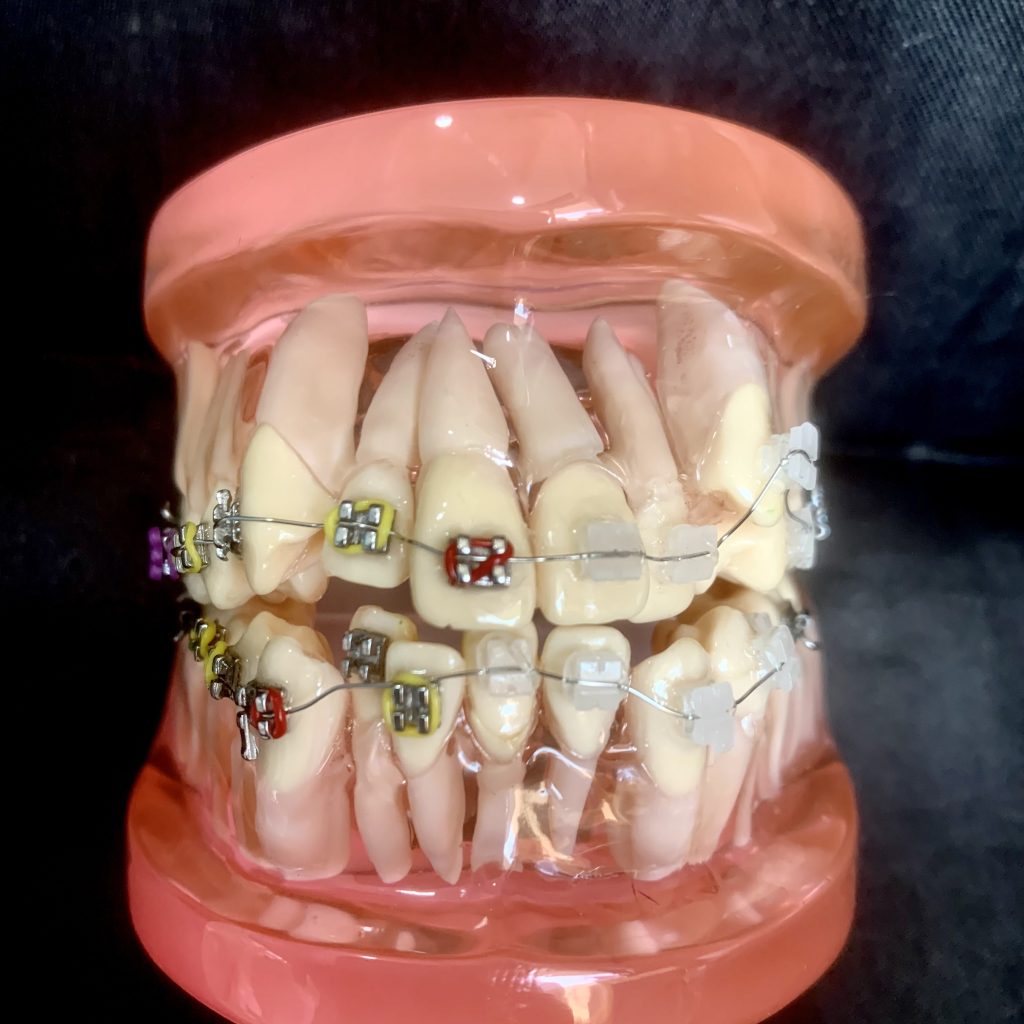
Dental Braces are appliances used to straighten your teeth. They have been around for about 50 years, with lots of advancements in technology along the way. Technically speaking, Dental Braces are small brackets glued to your teeth with a wire running through them.
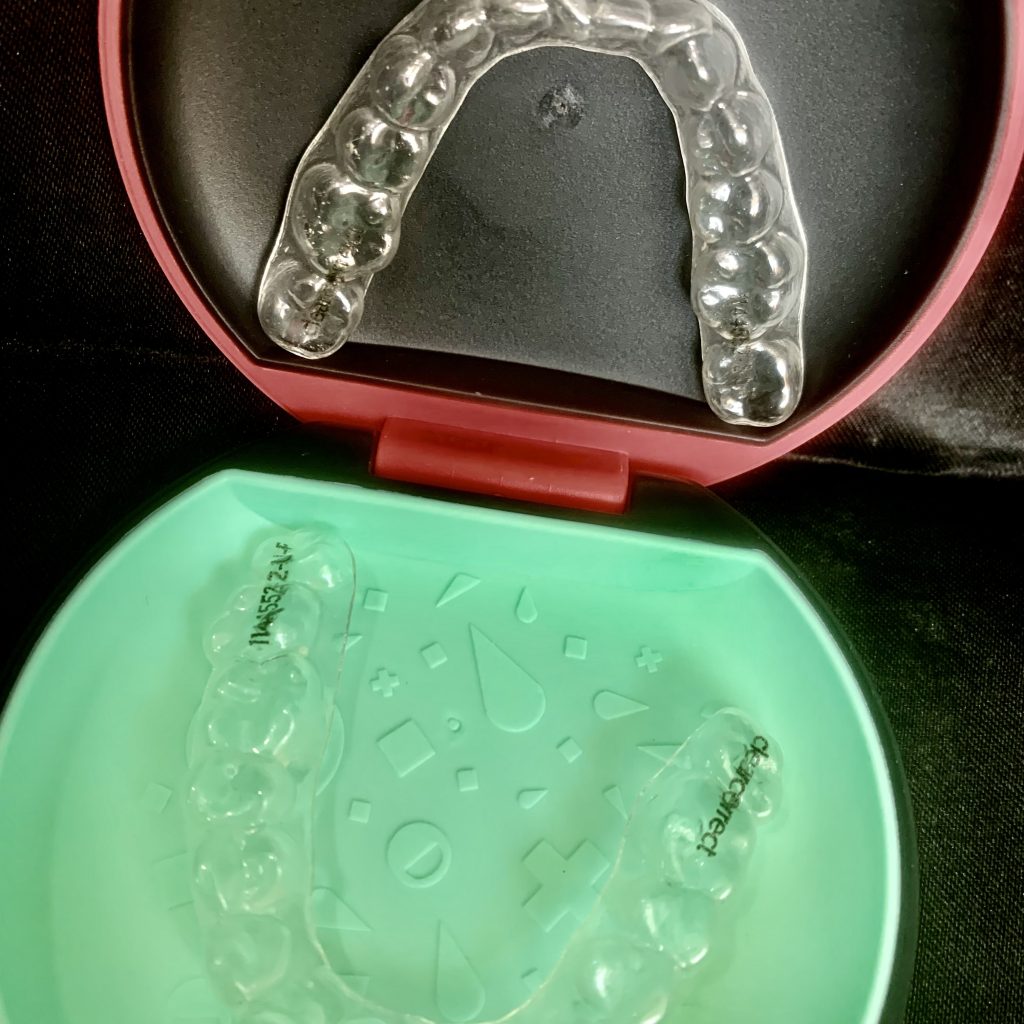
Another type of “braces” are Clear Aligners. Some people call them “Invisible Braces”, but they are technically not braces. They are clear plastic appliances that fit over your teeth. You can remove them for meals and brushing because they are not glued to your teeth. In general, Clear Aligners have less control in moving teeth and are suitable for simpler cases.
What are the benefits of straightening your teeth?
Straight teeth don’t just give you a beautiful smile, which boost your overall attractiveness. It also contributes to health benefits.
As you can imagine, a neater set of teeth makes them easier to clean. This goes towards reducing your risk of developing tooth decay and gum disease. Both which can result in eventual tooth loss.
When your teeth fit nicely against each other, it spreads the chewing forces evenly. This reduces abnormal wear and tear on your teeth.
Properly positioned teeth also allow you to pronounce words clearly. So straightening your teeth has aesthetic, health and functional benefits.
How do dental braces work?
Braces straighten your teeth with multiple small adjustments over many months. With each adjustment, the bone around your tooth roots undergo changes (remodeling) allowing your teeth to move. This is a biological process which requires time. That is why treatment commonly takes 1-2 years.
Who can provide dental braces? Where can you get dental braces?
Orthodontists and dentists: Only registered dentists are allowed to perform Dental Braces (Orthodontic) treatment in Singapore. However, if you want someone specially trained in Dental Braces, see an Orthodontist. In addition to basic dental training, Orthodontists undergo rigorous advanced training (at least 3 years full time Masters Degree) and are accredited by MOH. Specialist treatment, even in the Medical field, is usually more costly. So if you make an “apple to apple” comparison (or rather “Specialist to Specialist ”), our fees, which are already affordable, gives you actually a lot more in value.
Public sector: Orthodontic treatment is available in dental clinics within hospitals and the National Dental Centre of Singapore. In the public sector, the dentist is usually an orthodontist or a trainee.
Private sector: As MOH does not restrict normal dentists from practising orthodontics, you may get treatment from an Orthodontist or a normal dentist. You can check if your dentist is a qualified orthodontist at the Singapore Dental Council’s website.
How much does dental braces cost in Singapore?
A search on Google will find you Dental Braces prices ranging from $2400 to over $10000. The fees of an Orthodontist is commonly in the $4000 to $5000 range.
When comparing prices, you should take note if the person is a normal dentist or an orthodontist. You may be able to benefit from specialist care by stretching your budget slightly. Most clinics allow you to pay progressively which makes the additional cost manageable.
For a rough idea of the “market rate”, you may check out the website of Singapore’s Ministry of Health which publishes average fee for dental procedures.
What can dental braces do for you?
Here are some common problems that can be treated using dental braces. While they are described individually, it is common for you to have a combination of these problems.
- Dental Irregularity/crowding: Simple put, this means misaligned teeth, usually due to a lack of space in your jaws.
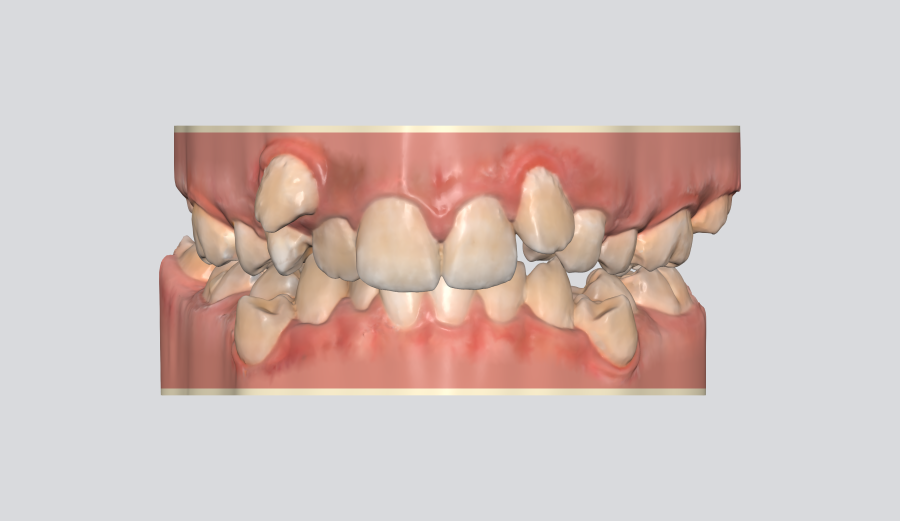
- Spacing between teeth: This can result when your teeth are too small, or jaws that are too big. It can also be due to missing teeth.
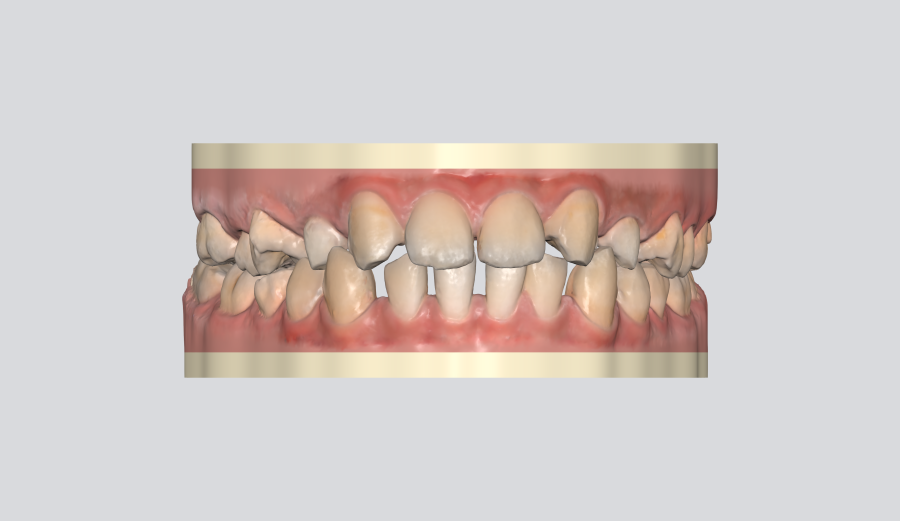
- Dental Protrusion: Commonly called “buck tooth” or “bunny teeth” where the upper front teeth sticks out. However, the lower front teeth can also stick out.

- Reverse bite: Some people call this “under bite”, which means that the lower front teeth stick out more than the upper.

- Deep bite: When your upper and lower front teeth overlaps more than average, you have a deep bite. In severe cases, your might even bite on the gums of the opposite jaw.
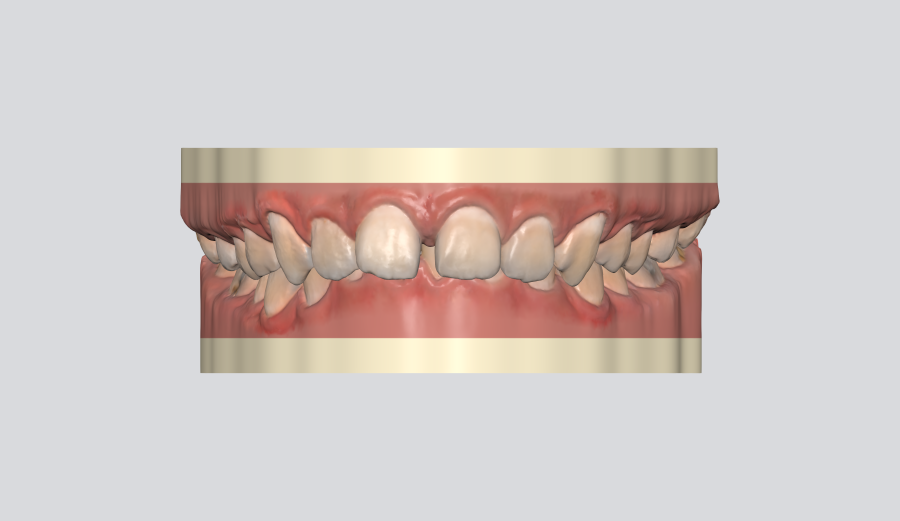
- Open bite: This is what you if your front teeth do not overlap at all. As there is not contact, you might find it harder to bite small food using your front teeth. You may also notice you have a lisp when prounouncing certain words.

Types of dental braces
- Conventional Metal Braces
If you are looking for the most affordable braces in Singapore, look no further. This is the most popular type of braces for students. It is the cheapest dental braces and is very, if not the most, effective. Downside? It is very visible. However, a lot of students love them because they can tie coloured rubber bands over them to personalize their braces. We also have Fashion Ties which come in different shapes like flowers and hearts.
- Conventional Ceramic Braces
These work the same way as the metal braces. The main difference is their appearance which is whitish. They are more brittle compared to metal braces and chip more easily. One thing that is not commonly known is that they tend to wear down the opposing teeth more too.
- Self Ligating Metal Braces
These look similar to conventional metal braces but have a clip or latch to secure the wire within the brackets. Depending on the design, modules can usually still be used, but to a lesser extent. The use of the built in clip reduces friction in the appliance system. This may speed up your treatment and reduce the pain you experience. The actual result however depends on your individual response. This means you may still feel more pain and take longer to complete treatment than another person on the conventional system. - Self Ligating Ceramic Braces
These are the ceramic versions of self ligating braces. They look similar to conventional ceramic braces but have a clip or latch to secure the wire within the brackets. The advantages from self ligation are the same as with the metal version. Just like in the conventional system, ceramic self ligating brackets are more brittle and abrasive to teeth surfaces compared to metal brackets. - “Gold” Metal Braces
These brackets have a gold tinge which you may feel is nicer compared to the silvery looking classic metal braces. Because of the gold tinge, it tends to blend in better and are not as striking as metal braces. The wire is tied in using modules. - Aesthetic Plastic Braces
These look similar to ceramic braces but are made of plastic. The advantage is that it is less abrasive than ceramic brackets and thus have a lesser tendency to wear down your teeth surfaces which come into contact with the brackets. The wire is tied using modules just like conventional ceramic braces. - Clear Aligners (Invisible Braces)
These are technically not braces. Many people choose these because they are the most discreet option. However they do not control tooth movement as well as brackets and are generally better for simpler cases.
How do you get dental braces? Your braces journey
1. Consultation
This is your most important visit where we listen to your concerns and advise you about what can or cannot be achieved with dental braces. Good two way communication is vital to ensure that you are happy at the end of treatment. It is important that you tell us in detail what you don’t like about your smile. With this, we can dissect and address every concern you have. As We have handled many cases who come to us from other clinics because of unmet expectations. So we make it a point to tell you clearly what you can expect and what compromises you should know.
2. Dental Records
Once you decide to proceed with treatment, a set of dental records will be done including
- Photos
- Digital X-Rays: Digital X-rays are lower in radiation compared to traditional X-rays
- Digital Impressions: This replaces the old fashion way of taking a mould of your teeth. It is more comfortable for you and a lot more accurate.
You can do these records on the same day as your consultation if there is enough time.
3. Braces Placement (Bonding)
The procedure takes 30-40 minutes and is completely painless. The brackets are basically glued onto your teeth with dental adhesives. If you require extractions, these should be done before the braces placement. You won’t feel any pain immediately after the braces are placed. It is normal if you do feel pain after a few hours. Most people can get by without painkillers.
4. Monthly Adjustments
You will visit us about once every month after your braces are placed. These appointments are usually quick lasting 5-15 minutes each time. Most student brace cases take 1-2 years to complete.
5. Braces removal. Yay!
Some of our patients actually feel sad because they love having braces on. After your braces are removed, a set of dental records are taken. These include digital impressions which will be used to make your retainers. Digital impressions enable us to make your replacement retainers based on the initial scan as many times as needed . This is a major advantage over traditional moulds which crack after your retainers are made. If you need a replacement retainer, you will have to do make a new mould which might not match your initial mould.
6. Retainer Fitting
Your orthodontic retainers are fitted one week after braces removal. At the start, you should wear your retainers all the time except for meals and brushing. You can transition to night time wear after the initial phase. Long term retainer wear will minimize any tooth movement as you age.
Frequently Asked Questions before starting braces
- When can I start wearing braces?
You can usually start braces when all your milk teeth have dropped out. This is usually when you are around 12 years old. The teenage years are an ideal period to have braces because your teeth respond very well to orthodontic adjustment. So it is not surprising that braces are very common among students in Singapore.
2. Are braces painful?
It is common to feel some pain during braces treatment. Most people find it mild and can get by without painkillers. The pain usually sets in a few hours after your braces are placed or tightened during the monthly adjustments. It usually gets better in a few days.
3. How long do I have to wear braces?
Most student braces cases take 1 to 2 years to finish. The duration depends on your case and how smoothly treatment progresses. One common reason for slower treatment is frequent breakage of your braces parts from eating hard foods.
4. What foods do I have to say goodbye to?
Once you get used to eating with braces, you can eat almost anything. However for people who experience frequent appliance breakages, we recommend avoiding hard foods. Chewing ice is a no-no, with or without braces.
5. How do I brush with braces?
More plaque and food debris will get trapped when you have braces. Dental decay usually starts at the sides of the braces, while plaque buildup at the gum margins will lead to gum disease. So pay special attention to these areas. Use an orthodontic toothbrush if possible, otherwise a regular toothbrush will do. Make sure you get close to the sides of the braces. For narrow spaces such as between the braces, use a small interdental toothbrush.
Keen to start your braces journey? Get a no obligation first consultation when you book your appointment online.




